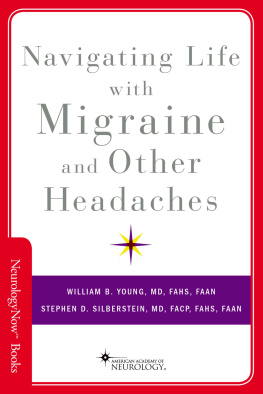I want to thank you and congratulate you for downloading the book, The Migraine Cure.
This book contains proven steps and strategies on how to make the difference between a simple headache and a migraine, how to realize what migraine triggers are and how to relief your migraines for life.
Headaches are very common. Almost everyone has a headache at some point. There have been writings of headaches since the time of the Babylonians. Migraine headaches are even explored in the Bible. Some truly known historical figures, for example, Napoleon Bonaparte was affected by severe headaches.
For anyone who experiences regular or severe migraines, preventing these painful headaches is this books top concern.
Definition
What is a migraine? Everyone, at least once in their life, has confronted with a very bad headache that often tended to reappear. It is a public health issue of strong impact on both the sufferer and society.
To clear your doubt, migraine is defined as a chronic neurological disorder characterized by repetitive mild to intense headaches , frequently in association with some neurological symptoms. It may appear only once every few years or several times a week. It can last between a couple of hours and three days. The pain generally begins in the first part of the day, on one half of the head. (Actually, the word migraine is borrowed from a Greek word that means half-head.) Rarely, the entire head is filled up with pain.
Associated symptoms might include vomiting, nausea, photophobia, sonophobia, or osmophobia. The pain usually gets worse by physical activity. More than one-third of people with migraine headaches sense an aura: a temporary visual, language, sensory or motor interference which indicates that the headache will soon appear. Sometimes an aura can come with brief or no headache succeeding it.
Migraines are considered to be caused by a combination of environmental and inheritable factors. Modifying hormone levels might play a role too, as migraines have more slightly effect on boys than girls before pubescence, but about three times more on women than men. The threat of migraines usually diminishes during pregnancy. The precise mechanisms of migraine are unknown. It is, although, believed to be a neurovascular condition. The main theory is associated with the intensification regarding excitability of the cerebral cortex and irregular control of pain neurons within the trigeminal nucleus belonging to brainstem.
Signs and symptoms
Migraines usually present with self-limited, repetitive severe headache in association with subjective symptoms. About 30% of people with migraines are facing with migraines accompanied by an aura and those who experience migraines with aura also regularly have migraines without aura. The seriousness of the pain, period of the headache, and recurrenceo f attacks are variable. A migraine persisting longer than 72 hours is entitled status migrainosus. There exist four possible stages to a migraine, even though not all the phases are surely experienced:
The prodromal phase , which appears hours or days prior to the headache
The aura phase , which closely comes before the headache
The pain phase , known as well as headache phase
The postdrome phase , the effects experienced succeeding the end of a migraine strike
Prodromal phase
Prodromal or ominous symptoms appear in around 60% of those who suffer of migraines, with a start that can vary from two hours to two days prior to the start of pain or the aura. These manifestations may include a vast variety of episodes, including altered emotional state, irascibility, euphoria or depression, exhaustion, desiring for certain food, rigid muscles (mostly in the neck), diarrhea or constipation, and reactivity to smells or noise. This might appear in those with either migraine without aura or migraine with aura.
Aura phase
An aura is a temporary focal neurological activity that happens before or throughout the headache. Auras occur gradually after a number of minutes and usually persist less than 60 minutes. Manifestations can be visual, sensory, or motor in essence and many people confront more than one. Optical effects appear most commonly; they are present in up to 98% of cases and in more than half of cases are not followed by sensory or motor reactions. Vision interferences often involve a shimmering visual disorder (a region of incomplete alteration in the range of vision which flashes and may interact with a person's skills to drive or read). These usually start near the area of vision and then expand to the sides with waving lines which have been detailed as looking like barricades. Regularly the lines are in white and black but some persons also see colored dashes. Some persons lose fragments of their visual field, known as hemianopsia, while others encounter blurring.
Sensory auras are the second most frequent type; they appear in 3040% of persons with auras. Most commonly begins as a tingling sensation on one side in the hand and arm and expands to the nosemouth region on the same part. Insensibility usually appears after the pins-and-needles sensation has faded with a loss of location sense. Other manifestation s of the aura phase can consist of speech or language interferences, world rotation and less frequently, motor complications. Motor symptoms show that the migraine is hemiplegic, and weakness usually prolongs more than one hour, far from other auras. Audible hallucinations or illusions have also been illustrated.









